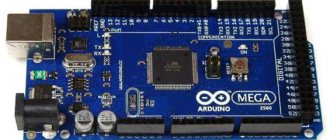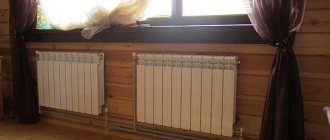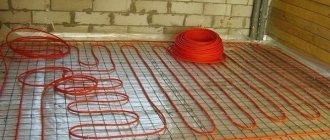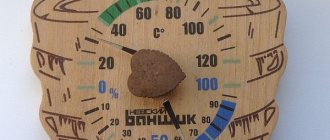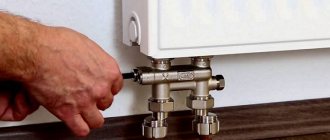Electric oil heaters are well-deservedly popular among the population due to a number of positive qualities that characterize this type of electrical appliance.
Oil radiator device.
These advantages include the following:
- Easy to maintain and connect. The main requirement is vertical installation. The heater can be connected in any room where there is an electrical outlet (preferably a Euro one).
- Low case temperature, especially for closed type heaters (60-70°C).
- Environmentally friendly, the air in the room does not dry out, and oxygen does not burn.
- High reliability, efficiency and fire safety. The heater automatically regulates the temperature in the room; if necessary, its heating element is disconnected from the power supply. It can work in this mode for several days.
- Relatively low price of classic models. You can always choose a model whose functionality will correspond to its cost.
In case of problems, the device can always be sent for repair to the nearest service center. If the warranty on your oil heater has expired, you can fix the problem yourself, especially since its electrical circuit is not that complicated.
Operating principle and equipment of the device
The device is based on a container filled strictly to a certain level with mineral oil.
Inside this container there are tubular electric heaters (TEHs). Heating elements must be constantly immersed in oil, therefore installation of an oil heater is allowed only in a vertical position. If the heater falls and the heating elements are exposed, the latter may fail.
Electrical connection diagram for oil radiators.
Work related to replacing heating elements, and therefore the need to drain and replace the oil, is usually carried out in specialized workshops (if you have experience and clean transformer oil, you can risk doing this yourself). If the oil tank is depressurized, it is better to trust the professionals, since this cannot be fixed at home. Sometimes it will be cheaper to purchase a new heater.
A simplified diagram of an oil heater is shown in Figure 1. The heating element, consisting of 2 oil heating elements, EK1 and EK2, is connected through the power switch V1, located on the body of the oil heater. Depending on the number of heating elements turned on, its power consumption changes (the circuit diagram for switching on the heating elements is shown conditionally and may differ).
The heated oil transfers heat to the body, which works like a regular radiator. The more sections it has, the faster the heat transfer occurs. The air temperature level in the room can be smoothly changed; it is set using a bimetallic thermostat, indicated in the diagram as SK1. The heater cannot be covered from above, otherwise the thermostat will simply turn off the device, reacting to the accumulation of hot air. Some models have special stands for drying clothes, but in general, using an oil radiator for drying is ineffective.
The heating element connection diagram also contains a thermal switch (SK2), which protects the device body itself from overheating. A feature of oil heaters is the gradual heating of the air. In order to speed up this process somewhat, some models are equipped with built-in fans. The connection location of the fan motor M in the diagram is conventionally shown by arrows, since it is not a mandatory element of the device. The mains switch SA1 supplies power to the warning lamp HL1.
Protection devices and wiring
The connection diagram of the heater elements inside the device is made according to a three-wire circuit. This means that it uses a single-phase network with a third wire to ground the device body. The power cord plug and the socket where the heater will be connected must have grounding contacts. This does not mean that the device will not work in an old-style two-wire network, these are simply modern safety requirements.
In addition, it is advisable to use at least a fire protection RCD connected after the input circuit breaker and the meter. To protect against electric shock from the device body, you can use a two-pole RCD on a separate branch where the sockets for the heater will be connected.
The power of oil heaters is usually from 1 to 2.5 kW, that is, actually equivalent to the power of a conventional electric kettle (2.2 kW). Therefore, there should be no special requirements for electrical wiring. The circuit breakers in the distribution board also have sufficient reserve for such a load.
The only thing you could wish for when choosing a heater is the presence of a sensor that turns off the device when it tips over, and a timer that sets its operating mode according to a predetermined schedule. In this case, you can always maintain the most comfortable climate in the apartment and avoid accidental burnout of heating elements.
Oil heaters imitate the radiator of a central heating system. They consist of a hollow metal form, inside of which there is a heating element. The design is filled with mineral oil and operates on a 220 V mains voltage. This device is inexpensive. It is safe to use.
How does an oil heater work?
The circuit of each oil heater is similar. The body of the heating unit is metal and consists of several sections that are hermetically joined together. The inside of the structure is filled with mineral oil, and the outside is covered with a layer of powder paint, which is very durable and resistant to mechanical damage.
The package includes:
- heating element (heating element);
- thermostat;
- heating regulator;
- wires;
- overlay panels.
The operating principle of any oil heater is the same. First, the wire is connected to the network, the heating element is heated, then, under the influence of thermal energy, the oil is heated, then the housing. Heat from the heated body is transferred to the air that comes into contact with it, it heats up and rises. According to the convection principle, cold and hot air are mixed, and its temperature rises. Some models are equipped with a fan to make the air change more intense.
Thermal energy heats the oil
Heating devices have different power levels and differ in the number of sealed parts. The room will heat up faster if the unit has more sections. At the same time, the heater is heavier and larger in size. All models are equipped with wheels with which the devices are moved, so the mobility of the heater does not depend on its size.
Oil convectors have a number of operating modes. For this purpose, switches are installed, and on some models there are touch control panels or LCD monitors, which show data on the operation of the device.
Oil heater malfunctions and repairs
If a heater that was working properly yesterday stops heating , then there is no need to immediately run to the workshop or to the store for a new heating device.
Many faults can be easily fixed on your own if you have basic skills in repairing electrical appliances.
An exception may be a faulty heating element , most often tightly rolled into the heater body. It is quite possible to remove it, but it will not be possible to put it back in place. Even if the heater is equipped with a removable heating element, it will be difficult to ensure the tightness of the device when replacing it.
Typically, malfunctions that occur when a heater breaks down appear in more accessible places. The most vulnerable point of the device is the cord, so its integrity should be checked first. If the design of the plug allows it to be disassembled, then you need to check the junction of the cord cores with the pins of the plug.
If the plug is working properly, the next step should be to check the condition of the cord itself, as well as its connection to the heater’s power supply. To do this, remove the decorative cover of the device panel and use a tester to check the serviceability of the cord. If it is damaged, the cable is replaced with a new one.
If the cable turns out to be working , then the fault may be hidden in the state of the power supply contacts. The contacts may be coated with carbon deposits and weakened.
In this case, the contacts are cleaned of carbon deposits with sandpaper , and the loose contacts are carefully tightened.
The thermostat is located in the same place. If darkening is visible on its contacts, then they also need to be cleaned. The bimetallic plates in the thermostat may be faulty . If damage is detected, the thermostat is carefully disassembled and the plates are replaced with new ones.
If the oil radiator belongs to the energy-saving , then its design has a thermostat that ensures that the device is turned on and off at the specified parameters.
If the heater is overheated or the temperature is low, it also needs to be inspected. If a malfunction is detected, this part is replaced with a new thermostat that has similar parameters.
If there is a fan in the oil heater design, it must also be checked . In this case, not only the contacts of the device are checked, but also the integrity of the winding of its motor. It is possible that it may need to be replaced.
After completing the above-described checks and eliminating the detected faults, the heater is assembled and then connected to the network. If the heating device still does not work , you will have to seek advice from a specialist.
Most likely , he will recommend purchasing a new heater. Some repairs can be so expensive that it's easier to head to the store.
You will find the structure and electrical diagram of the oil radiator in the video:
For instructions on how to repair (replace the heating element) an oil heater with your own hands, watch the video:
Installing an oil radiator for heating in a country house or garage is now commonplace and necessary. After all, despite all the delights of scientific and technological progress, interruptions in heating still occur. You can assemble such a unit yourself or purchase a factory model, but in any case, sooner or later all owners are faced with the need to repair these products. We will talk about possible breakdowns and intricacies of assembly now.
How to disassemble an oil heater?
Before repairing the heater, you need to determine the cause of the breakdown. To do this, you will need to disassemble the unit, although outwardly it seems that the oil heater cannot be disassembled, since it is monolithic.
Important! Before starting repairs, the device must be disconnected from the network. The structure cannot be turned on until it is fully assembled.
Disassembly procedure
There are many different models of oil heaters; there is no exact algorithm for analysis. But we can highlight general rules with the help of which the unit can be disassembled faster.
It is not difficult to disassemble an oil heater
First you need to carefully study the convector control panel. The design of a cheap oil heater is similar to an expensive one. Disassembly begins with the stage of unscrewing the bolts and removing fasteners. On some models, instead of screws, there is a plastic panel that is latched with a spring. In this case, you need to feel the latch on the panel with any wedge-shaped object (preferably made of plastic), press it harder and thereby bend it.
Can an oil heater explode?
Oil is not a flammable liquid, so there is only one answer: oil units do not explode. If the thermostat breaks, such an electric heater will overheat, the housing will depressurize, and hot oil will leak, which can cause a fire.
An oil heater may cause a fire.
There are rules for operating oil structures:
- Do not use the devices in bathrooms or other rooms where there is high humidity.
- It is prohibited to cover the heater with fabrics. Overheating will occur and oil will begin to leak.
- The device should be located at a distance of half a meter from the wall, since there is a thermal relay that turns off the device in order to protect it from overheating.
- The heater must be positioned vertically during operation, because inside it is not completely filled with oil. If you put the device down, the heating element will be exposed, which will lead to depressurization.
- Do not move the unit by pulling on the cord. It will come off and there will be a short circuit.
- The cord should not come into contact with a hot surface, as this will cause the insulation to melt.
- In winter, the unit should be kept only in warm rooms.
- Do not use the device with a broken overheat sensor.
There are no categorical contraindications to leaving an oil heater overnight. This is one of the safest devices. But it is still recommended in such cases to purchase products with automatic shutdown.
The design of a simple oil heater
It is good to cover an oil heater with clothes to dry. The only type of device where the owner will avoid fatal consequences. The only thing is that on the side of the accordion container there is an extension equipped with electronic filling; avoid covering the compartment. The oil heater device includes the following elements:
Emergency shutdown sensor (thermal fuse, relay)
- A container filled with oil. Appearance - like an accordion, heating up to a decent temperature; wait a moment to touch it with your hand. When it comes to drying items, don't be afraid to place heat-resistant items. The container is sealed, but there is 15% air inside. Try placing the oil heater upside down, tilt it on its side, and return the load to the wheels. Hearing dull blows frighten mice: air bubbles burst inside. Water is not used by the heater, it will quickly evaporate, corrosion of the housing will become significant, the manufacturing technology would require the complete exclusion of air from the working fluid (water + oxygen = the most powerful oxidizer of living nature). The coefficient of thermal expansion of the most common liquid on the planet is ten times higher than that of steel. It's not good if the tank ruptures.
- The lower part of the end of the accordion contains a heating element, to which the electronics compartment clings. The oil heater does not have a pump and works by natural oil recirculation. The current starts from the heating element upward, then at the opposite end of the battery the liquid descends. While working, it emits audible spiral vibrations under the influence of alternating voltage. The effect is irreversible and is caused by the influence of the Earth's magnetic field. The boiling point is above 100 ºС (150-200), avoid touching the container, the liquid is not brought to a change in phase state due to the prohibition of using water: the container will burst. A double heating element (two spirals) will allow you to more flexibly regulate heating.
- There is a thermal fuse located not far from the heating element. The device will prevent a fire from happening if the oil suddenly leaks out and the temperature relay breaks. An oil heater would work hard when the copper heating element began to melt. The oil will leak out - the high temperature through the housing will cause the stuck thermal fuse to trip. The structure is divided into bimetallic (reusable) or wire (disposable). The photo shows the presence of a clearly blackened tablet above the heating element: a thermal fuse (see the first photo of the review), or a thermal relay (determined by the design).
Steel profile providing connection between the electronics compartment and the heater accordion
- The relay is located at the top. The main difference from the iron is visible: there is no contact with the body. Apparently, the thermal relay is simply trampling the air. An oil heater is reminiscent of an electric kettle, in which a bimetallic plate is often exposed to steam penetrating through a special hole in the housing. Thermal relay is an adjustment mechanism; the thermal fuse is designed to localize the event of failure of standard equipment.
- The pictures show: there are two switches, each has a phase, the ground of the heating element, and one wire of the thermal relay. This redundancy allows the indicator lights to glow. One phase is not enough to ensure the Joule-Lenz effect. The manufacturer does not know in advance which side the user will plug in, whether the blue (red) wire will be neutralized or exposed to 230 volts.
The electrical part differs little from an iron, electric kettle, or water heater. You can turn on both heating element coils simultaneously, separately. In the latter case, the oil heater will take longer to reach the operating mode. There is a chance that in a cold room the design will work without interruption.
What kind of oil is poured into the oil heater, the efficiency of the oil heater
Many people are interested in what kind of oil is poured into a floor-mounted oil heater. Transformer oil is poured into the sections. It is heated by a heating element and circulates. The oil temperature can reach one hundred degrees Celsius.
The heat output of the heater is very high. To increase efficiency, fans are installed on radiators, and special water evaporators are installed to prevent the air in the room from drying out.
The efficiency factor (COP) of the oil heater is 80%. With proper operation, the service life of a floor oil heater is more than twenty years.
The oil heater contains transformer oil
Major breakdowns of oil heaters
More often the heating element breaks down and the tank leaks. The oil heater becomes completely unusable. The relay will last for years. Today, Soviet irons are common and are still functional. The mechanism cannot be repaired. You need to clean oxidized contacts with alcohol. Repair of electronic components is limited primarily to replacing elements. Thermal fuses are too lazy to repair: it is difficult to calculate the response temperature. Masters avoid taking responsibility. Keys and relays should be cleaned from time to time.
How to choose a device?
Heating problems in the cold season can arise both for residents of city apartments and private country houses. The problem that arises must be solved in an emergency mode using electrical equipment.
Why not take care of buying an oil heater in advance? These devices are very reliable and safe to use. The heating elements are closed, so there is no risk of fire. These designs were invented a long time ago, the principle of use has not changed.
The latest models have added several new features:
- light indicators;
- timers;
- fans;
- humidifiers;
- thermostats;
- overheat shutdown sensors.
Oil heaters are divided into several types:
- Floor-standing. These are the most common radiators.
- Wall flat. They consume energy very economically.
- Tabletop. These are low-power devices and have low heat transfer.
Some models have a fireplace effect. They operate silently and quickly heat the room. They have drafts installed on both sides, so the heated air circulates very quickly.
Modern models have blocks with programs and timers. If there is such a block, you can set the on and off times. As a rule, new units are controlled remotely and have an emergency shutdown sensor.
Oil heater does not take up very much space
When choosing a device, consider the following factors:
- Power. This is the main indicator. A power of 1 kW is enough to heat a room of 10 square meters. meters with a three-meter ceiling. If there are windows or doors, then we add 0.2 kW for each element. In a room from 30 sq. meters you need to install several such devices.
- Dimensions. This indicator depends on the number of modules: the more modules, the larger the structure, the power of the device increases and the area of the heated room increases. This must be taken into account when choosing such equipment.
- Design features. This refers to additional functions that improve the ease of use of the device and increase the quality of its work. For example, the presence of a network indicator, temperature control mode, etc.
- Manufacturer. The manufacturer should also be taken into account. Brands that have been on the market for a long time are well-known and recognizable. They guarantee the quality of their products and long service life.
When choosing a heater, you need to take into account that the more functions installed on the equipment, the more expensive its cost and the more energy it will consume. Also, brands from well-known manufacturers are more expensive. You need to determine the optimal price for yourself, and also take into account the functionality of the device. This will allow you not to make a mistake in your choice.
Popular models of oil heaters
Let's look at the most popular heater models.
Ballu BOH/CL-09
Consists of three modules, operates in three modes with power from 600 to 1500 W. Can heat a room of twenty square meters. Equipped with a thermostat to maintain the set temperature for a certain time. For ease of movement it is equipped with wheels. Filled with mineral oil. Refers to environmentally friendly products.
The cost of such a device is from 2 to 4.5 thousand rubles.
Delonghi KH 770920 HOR
The unit is assembled from nine sections. It has cells to maintain the desired temperature, due to this it does not overheat. The device can heat a room up to 60 square meters. meters, has a thermostat, operates with a power of up to 2500 W. It has wheels that can be folded and a handle that can be moved freely.
The cost of this model varies from 5 to 6.5 thousand rubles.
Oil heater Delonghi KH 770920 HOR
Timberk TOR 21.1005 SLX
The structure consists of 5 sections. Capable of heating a room of 15 square meters. meters, the power of the unit does not exceed 100 W. Thanks to its small size, it is convenient to carry. Includes a folding handle, a power cord about 2 m long and wheels. An overheating protection system and indicator are installed.
You can buy such a model for 1,500 - 2,600 rubles.
General Climate NY18LA
Operates with a power of up to 1800 W, this allows the device to heat up to 18 square meters. meters. The model is controlled mechanically, has an anti-freeze function and a light indicator.
The cost of such a device is reasonable, ranging from 1,900 to 4,000 rubles.
Vitek VT-2122 GY
The thermostat of this unit is designed to heat a room up to 25 m2. The heater is floor-standing and can operate in different modes, in which the power can be set from 800 W to 2000 W. This is the best option for a small apartment. The heating temperature can be adjusted and is equipped with a light indicator.
Heater device
Oil heater design diagram
- 1 – The housing consists of several sections containing oil.
- 2 – The handle is designed to move the heating device to other rooms.
- 3 – The panel displays the operating time, mode and temperature of the device.
- 4 – The thermostat prevents significant heating of the housing (1).
- 5 – The switch disconnects the device from power.
- 7 – The reel is used to accommodate the power cord (8).
Oil cooler design
The heater device consists of mechanical and electrical parts. The main and largest element is the metal container in which the mineral oil is located. Based on the appearance of these tanks, the heaters are divided into:
Panel ones have a flat shape without cutouts and can be installed both on the floor and on the wall. To do this, the manufacturer can supply the device with special fastening devices. Compared to sectional ones, to obtain the same power, panel ones are made in larger sizes. Sectional ones consist of segments of the same type assembled into one structure. They are designed for installation on a vertical surface. The more sections a heater contains, the more heat it can produce and therefore more power.
Types of radiators
The tank may be equipped with a safety valve; it protects the container from dangerous pressure. A tubular electric heater (TEH) is mounted at the bottom of the tank; it heats the oil to the required temperature. In addition to the heating element, the circuit includes the following elements:
- fuse;
- thermostats;
- warning lamp;
- power switch;
- fan;
- rollover protection.
All electrical elements, except the heater, are located on the cover. The fuse makes the electrical circuit safe by protecting it from short circuits and is located near the input of the power cord. An LED is used to signal the operation of the device; there may be several of them, depending on the additional purpose. The power switch is presented in the form of a toggle switch when using manual control, or a variable thermostat in an automatic device.
Heater device
Temperature control is carried out using a thermostat. How is it built? This device consists of a bimetallic strip and contacts. The plate is assembled from two metals having different expansion coefficients. When heated, one part of the plate expands more than the other, and the strip becomes deformed. This property is used for switching contacts of electrical devices; when heated, the plate bends and presses on the insulating support of the contact, disconnecting it. When it cools, it returns to its previous position, connecting the contact.
If such a plate is moved away from the contact, then operation will occur at a higher temperature. The plate is heated from the tank itself, since the thermostat is located in close proximity to it, and from external air through the housing on which it is located.
In some devices, manufacturers install a fan, which increases heat transfer, which leads to increased speed and uniform heating of the room. An important device is rollover protection. It consists of two contacts, one fixed, the other movable, located on an eccentric plate.
How does an electric heater work?
Almost all types of heaters are designed similarly. Both simpler and more complex models are available. We will look at the device of the most complex option. In simpler models, a thermal fuse and a tilt sensor may not be included in the circuit.
Let's consider a more simplified version with one-key switching and one light bulb. Often heaters are equipped with a two-key switch and several indicator lamps; the operation scheme will be similar, the only difference being that instead of one key there will be two, and there will be two heaters in one case. In convection options, a sensor for preventing objects from getting inside is often built in, but it connects and disconnects the power supply in the same way as a position sensor.
Any modern electric heater consists of a plug with a power cable, which is connected through a thermostat and a switch to a heating element installed in the housing - a heating element. Very often the heating element has not 2, but 3 contacts for connection. The first power supply wire is connected to one, and from the other, from the socket, two other wires are connected from a two-key switch, which allows you to turn on either one spiral or two at once - at full power.
The circuit may contain a thermal fuse that automatically turns the device on and off to protect against overheating. A tilt sensor can also be installed, which opens the circuit when the heater is tilted above the permissible angle. In expensive convection models, other sensors are also installed. For example, protection against objects getting into the device.
Some models may have a fuse to protect against overload currents or short circuits, which is triggered in emergency situations.
jelektro.ru
Oil-filled heater operation
The operating principle of the oil cooler is as follows. When the device is connected to the electrical network, the device goes into standby mode. To turn it on, you need to select an operating mode; it is selected using an adjustable thermostat.
Other models on the case have two power adjustment keys; when one of them is turned on, the following circuit is connected: power is supplied to the fuse, then the current passes through the heater spiral, indicator light and mode switch contacts. After this, it passes through the closed tip-over protection contacts; if the heater is tilted strongly, these contacts are open and the device will not turn on. Then the current passes through the contacts of the emergency and adjustable thermostat and goes into the network. If you need to increase the heating speed, turn on the second heater coil using another key, which is connected in parallel to the first.
How do thermostats work? As the heating element heats up, the oil around it also begins to heat up and rise, and cold oil comes in its place. This is how the entire volume of coolant is mixed and heated.
Design and principle of operation of the heater
In appearance, an oil heater most often resembles a regular heating battery, however, this device is sealed, and its internal space is filled with oil.
A heating element is inserted at the bottom of the container . A thermal fuse is located near the heating element, which serves to turn off the heater if the temperature of its body increases excessively.
The thermal relay is usually located at the top of the housing, without touching it. A switch is placed near the relay. If it is present, there is no need to remove the plug from the socket to turn off the heater.
The simplest diagram of an oil heater looks like this:
When the switch is closed , after the plug of the electrical appliance is plugged into the network, the heating element immersed in oil begins to heat up. The start of operation of the device is indicated by a light bulb.
Using an adjustable thermostat, the maximum temperature is determined, after which the heating element will turn off . It will switch back to heating mode after the device has cooled to the set temperature.
The thermostat is adjusted by a bimetallic plate located inside it. The position sensor is designed to break the electrical circuit when the heater overturns.
To better control the operation of the device, it is equipped with two heating elements. In this case, two switches are installed on the housing. With their help, the heating power is regulated. When adjusting, one of the heating elements can be turned off.
The schematic diagram of an oil heater with a fan differs practically little from a conventional heating device. Its main difference is that if there is a fan, the heating elements cannot be turned on if the fan does not work for some reason. This heater circuit prevents damage to the heating elements from overheating.
Parameters to consider when choosing
Depending on the purpose for which the heater is purchased, the requirements for the device will differ. Therefore, before going to the store, you should think about how long this unit will be used, how much space it should heat, where it will stand, and so on. Sometimes even the color of the case matters. Other features to consider when purchasing can be seen in this video:
For ease of movement, some structures are equipped with handles, this makes it possible to easily move them, for example, from one floor to another. If you need to first heat one room, then another, then the built-in rollers will come in handy.
They won't scratch the floor and only require one person to move, even if the unit is hot. In cases where there are few outlets in the house, a long cord is required, this is also provided by some manufacturers. If the cable is not completely used, its remains are wound on a special bracket. What else should you pay attention to?
Power
This is the main indicator; the time spent heating the room depends on the power. A lack of power will not allow you to raise the temperature to the required value, and an excess will not be considered a disadvantage, unless heating occurs faster and the price is higher. Another thing is that more powerful heaters consume more current per unit of time. This can be seen in the table below.
Dependence of current on power
If you add an electric kettle, a powerful vacuum cleaner, or a water heater to the heater, the home electrical system will fail. Another reason to choose a less powerful unit is to reduce humidity. The more powerful the device, the drier the air becomes.
Advice. It is usually recommended to choose power at the rate of 1 kW per 10 square meters, provided that the room is insulated. If there are cracks in the doors and windows, then a powerful device will not cope, especially if there is severe frost or wind. For a more accurate calculation, you can use the electronic version of the power calculator.
Radiator section thickness
Manufacturers try to make the thickness of the sections as small as possible, because the oil cools faster. Unlike water radiators, which use process water with many impurities deposited in them, oil radiators use pure coolant. To increase heat transfer, in some models the upper part of the heater is expanded, as can be clearly seen in the figure.
Extended top model
Others incorporate a fan, forcing air through the sections.
Power mode switch
This function allows you to adjust the heating speed. Mainly used to quickly heat a room. For example, arriving at a dacha or country house for weekends or holidays. Two types of switching are used:
- using switches;
- using a thermostat.
The first method uses additional heating element coils. Turning on all the switches located on the case puts the device into forced mode. After the temperature has reached the desired level, the additional heater coils are turned off, and the device operates in gentle conditions.
In the second case, a wire with increased resistance is wound onto a bimetallic plate through an insulator and connected to the heater circuit. During operation of the heating element, the wire heats up and heats the plate. The more the spiral works, the more the plate heats up; when the set level is reached, it is triggered, turning off the spiral. Usually there is a second indicator that signals when the device is turned on and off.
Humidifier
Rapid heating of the room is associated with one unpleasant consequence - the air becomes dry. This occurs due to an increase in its volume. When heated, the gas expands and the excess goes outside, causing the water vapor content to decrease and the air to become dry. This phenomenon is poorly tolerated by many people. Some heater models are equipped with an air humidifier. This is a plastic water container that is installed on the radiator. While the heater is operating, the container heats up and the water begins to evaporate, saturating the air with the necessary moisture.
Interesting! To raise the humidity, just hang a damp cloth next to the device. When it dries, the water passes into the surrounding air. Wet cartridges can also be used; they are installed in the path of the fan, which drives air through the radiator.
Built-in fan
The main purpose of the fan is to speed up heating. It is mounted in the cover in such a way that the air flow created by the fan is directed towards the radiator. Passing through the heat exchanger, the air heats up and, leaving the unit, mixes with the surrounding atmosphere. Turns on and off using a switch located on the lid. Thanks to forced circulation, air mixing occurs faster. Typically, fans are installed on more powerful devices.
Heater with fan
The disadvantages are noise and the need to control the condition of the fan, because... it is not designed for long-term operation.
Device weight
When choosing, do not forget about the weight of the device. If it needs to be carried and transported frequently, then it is best to choose one with handles and wheels. Weight will depend on the power of the heater and the presence or absence of a fan. The number of sections and the size of the device itself also affects the weight. Therefore, you should consider all the pros and cons, and, if everything suits you, make the final choice.
The most common problems and their solutions
If the radiator does not turn on when you connect it to the network, first check if it works in another outlet. If there is no reaction, then it is necessary to examine the plug and heater wire for darkening, creases, and melting. You can test the control panel using a multimeter: if its light comes on when touched, then the radiator is working, there is a problem with the power supply to its components.
In a situation where the keys do not light up or the device does not respond to being turned on and off, then test it with a multimeter in a de-energized state. In the on position, it should show the short circuit symbol.

